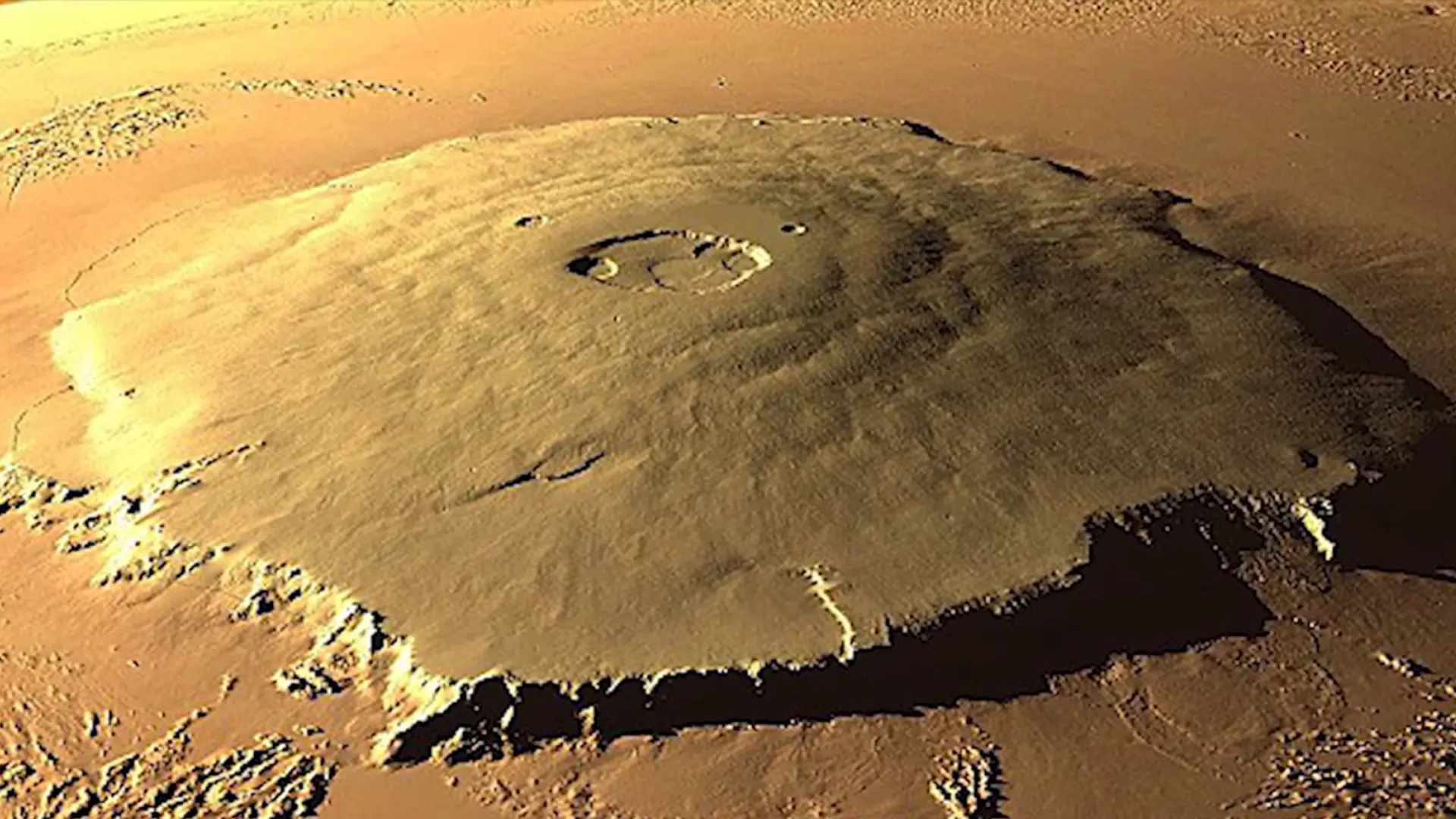Olympus Mons is the largest volcano on Mars and is, in fact, the tallest mountain in the solar system. It stands 21.9 kilometers (13.6 miles) above the Martian surface. By contrast, Mount Everest, the highest peak on Earth, is only 8.8 kilometers (5.5 miles) high.
The shield volcano Olympus Mons is located in the Tharsis area of a massive volcanic plateau close to Mars’ western hemisphere. Its comparatively shallow slopes are the result of millions of years of fluid lava flows. Olympus Mons is the real giant among planetary-scale features, with a base that is roughly 370 miles (600 kilometers) in diameter, roughly the same as Arizona.
The massive Size
The immense size of Olympus Mons can be attributed to Mars’ unique geological conditions. Unlike Earth, Mars does not have tectonic plate movement, which means that lava can collect in one location for millions of years. In addition, Mars has relatively weak gravity, which is only is 38% that of Earth’s, meaning that structures can grow much taller than they would on Earth.
At its summit lies a huge caldera, a volcanic crater 80 kilometers (50 miles) wide, created by the collapse of the magma chamber after repeated eruptions. The mountain’s western slopes are much steeper than the eastern side, carved out by Martian winds and erosion patterns over time.
A Young Volcano
Geologists estimate that Olympus Mons is relatively young, not more than 200 million years old, and that it may still be volcanically active. The reason for its relatively pristine state is that Mars has such a thin atmosphere that there is less erosion compared to Earth.
It was first seen on Earth as a bright feature called Nix Olympica, known as “Olympic Snow.” The space agency’s NASA’s Mariner 9 spacecraft confirmed the size of this mountain and renamed it in 1971 Olympus Mons.
Olympus Mons is an excellent chance for scientists to explore Mars’ volcanic and geological history. Such an enormous size and a relatively young age can explain how the planet works, lacks tectonic activity, and how it could have evolved over billions of years.
Future Mars missions may explore Olympus Mons more closely, potentially uncovering more about the planet’s volcanic activity and habitability. For now, the towering giant remains a testament to the dramatic forces that have shaped Mars.




